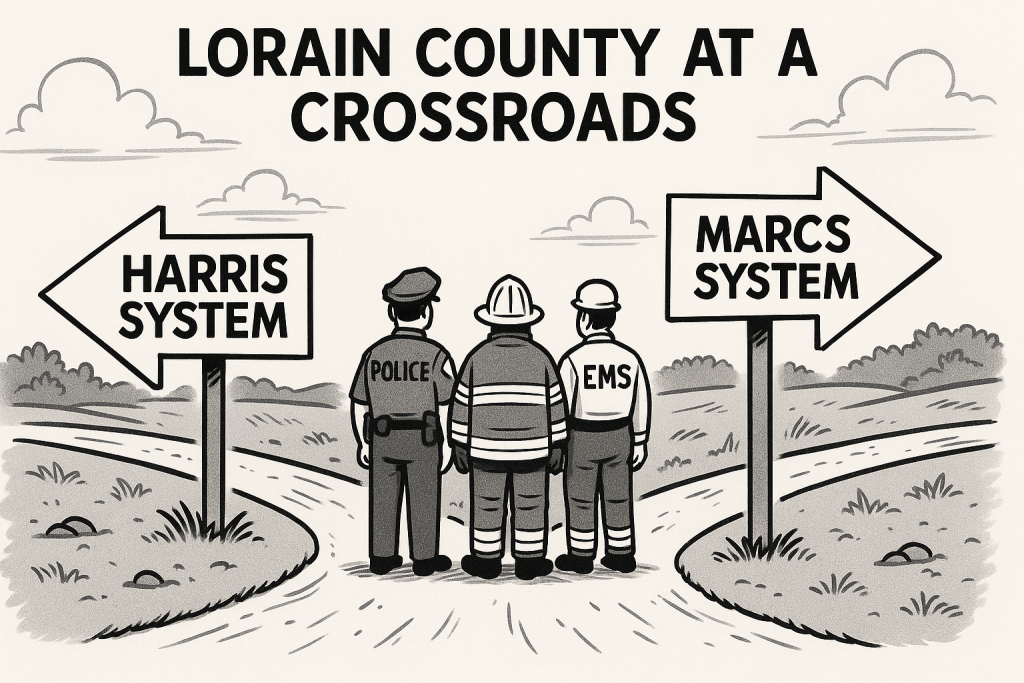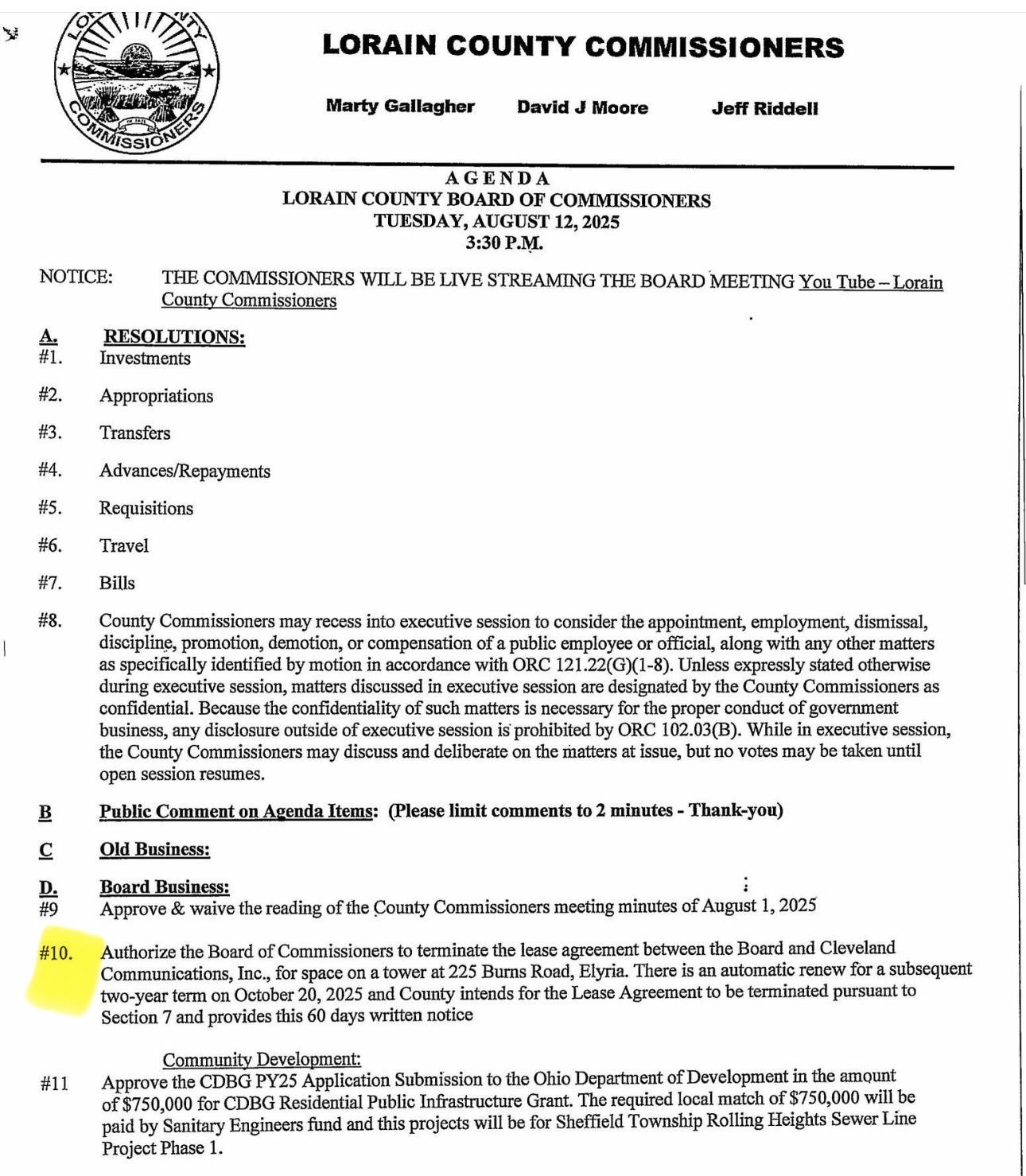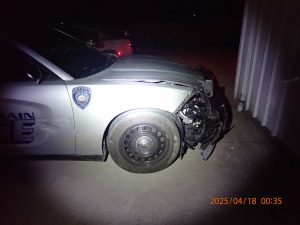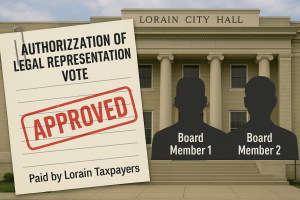Lorain County at a Crossroads: Public Safety, Radio Systems, and a Contentious Vote

Aug 11, 2025
By Aaron Knapp Lorain City Politics
On Tuesday, August 12, the Lorain County Board of Commissioners is scheduled to vote on a resolution that could fundamentally alter the future of emergency communications in the county. The decision centers around the implementation of the Ohio Multi-Agency Radio Communications System (MARCS) and the decommissioning of existing infrastructure used by the majority of Lorain County first responders.
This shift, if approved, could have widespread implications—not only for the communications capabilities of law enforcement, fire, EMS, and dispatch—but also for public safety, budget transparency, and interoperability between local and regional agencies.
The MARCS System: What It Is
The Ohio MARCS system is a statewide digital trunked radio network operated by the state of Ohio. It allows for interoperable communication among multiple jurisdictions and agencies. It is used by thousands of public safety and service entities across the state and is maintained through a state-level infrastructure that includes hundreds of towers and microwave links.
MARCS, as currently proposed in Lorain County, uses Motorola equipment and is based on the Project 25 (P25) Phase 1 standard—a system that, while functional and widely used, is no longer considered the most modern available. The more current P25 Phase 2 systems, such as the Harris VIDA platform already in use by many agencies in Lorain County, offer greater spectrum efficiency and functionality.
What’s Already in Place
Roughly 80% of Lorain County’s first responders currently operate on a Harris Phase 2 system. This includes a network built out with modern technology designed for increased capacity, clarity, and redundancy. The Harris system reportedly remained fully operational during a recent major storm that affected regional communications—an incident in which the MARCS system experienced partial failure.
The existing Harris system was reportedly costed at approximately $8 million for full countywide coverage, including hardware, repeaters, and network infrastructure. In contrast, the proposed MARCS migration is estimated to cost over $18 million, including Motorola hardware that may already be reaching end-of-life based on Motorola’s own product documentation.
The Budget Questions
The decision to invest in MARCS and its supporting Motorola infrastructure comes amid broader concerns about county spending. Critics of the transition point to the following expenditures:
- Over $18 million committed to Motorola hardware and associated upgrades.
- Approximately $14 million invested in purchasing the former Midway Mall property, which remains unsold and largely unutilized.
- More than $4 million spent in outside legal fees, reportedly due to a lack of a centralized public defender’s office.
At the same time, county commissioners have raised concerns about the county budget, including indigent defense spending and recurring radio subscription fees that accompany MARCS participation.
Interoperability and Safety Concerns
One of the key arguments from opponents of the MARCS transition is that moving dispatch off the Harris network—and onto MARCS—could temporarily sever direct communications between dispatch centers and the 80% of agencies still using Harris. Unless and until a new central communications center is constructed and made operational (a process that could take months or more), those still on Harris would be operating without direct dispatch support.
This could introduce significant risks for first responders and the public in emergency situations where seamless, real-time communication is vital.
Legal and Political Questions
Some public safety officials have called for legal action—including a potential injunction—to prevent the vote from moving forward until pending federal litigation related to the radio contract is resolved. Others have called for countywide transparency on how decisions were made regarding vendor selection, contract bidding, and public safety impact.
There is also ongoing concern over whether commissioners are acting within legal bounds, and whether the county has conducted a full needs assessment with input from all relevant agencies—including fire, EMS, police, and dispatch—before moving forward.

What Happens Next
The commissioners—Dave Moore, Jeff Riddell, and Marty Gallagher—are expected to vote on the resolution at the public meeting scheduled for tomorrow. If approved, the county will proceed with transitioning dispatch and public safety communications onto the MARCS system and begin decommissioning the Harris system infrastructure.
What remains unclear is how quickly agencies that prefer to remain on Harris will be able to re-establish direct dispatch capabilities—or whether the county has contingency plans in place to ensure uninterrupted communications during the transition.
For now, many first responders and residents are watching closely. The outcome of this vote may shape not just public safety communications for years to come, but also define how decisions are made—and justified—by those in charge of public funds and public safety in Lorain County.





